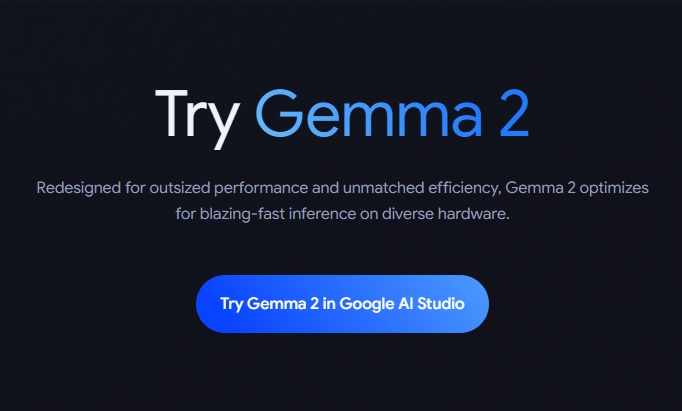Gemma is an open-weight AI model developed by Google DeepMind, designed for developers and researchers who want to build AI applications responsibly. It is based on the same technology as Google’s Gemini AI, but is optimized for efficiency and open use.
Key Features of Gemma
🚀 Lightweight & Optimized – Smaller than Gemini, designed for local and cloud use.
🖥️ Open-Weight Model – Available for developers to fine-tune and customize.
💡 Efficient & Responsible AI – Built with safety features and optimized for lower computational power.
⚡ Supports Local Deployment – Can run on personal hardware, cloud services, and edge devices.
🛠️ Integration-Friendly – Works with TensorFlow, JAX, and PyTorch.
Gemma Model Variants
📌 Gemma 2B – A lightweight 2-billion parameter model for small-scale AI tasks.
📌 Gemma 7B – A more powerful 7-billion parameter model for advanced applications.
How to Use Gemma?
1️⃣ Access the Model – Download via Google AI’s Model Garden, Hugging Face, or Vertex AI.
2️⃣ Set Up Environment – Use TensorFlow, PyTorch, or JAX for development.
3️⃣ Fine-Tune & Customize – Adapt Gemma for specific AI tasks.
4️⃣ Deploy & Scale – Run on local devices, Google Cloud, or AI accelerators.
Who Can Use Gemma?
✅ Developers – Build AI applications with customizable models.
✅ Researchers – Experiment with open-weight AI models.
✅ Startups & Businesses – Deploy AI efficiently without massive computing costs.
How to Set Up Google Gemma for Your AI Project 🚀
Google Gemma is an open-weight AI model designed for developers and researchers. You can use it for chatbots, content generation, coding assistance, and more. Here’s a step-by-step guide to setting it up!
1️⃣ Choose Your Setup Environment
Gemma supports:
- Google Cloud Vertex AI (for cloud-based inference & fine-tuning)
- Hugging Face (for local deployment & fine-tuning)
- JAX, TensorFlow, or PyTorch
👉 Recommended: Use Google Colab or a local GPU for testing.
2️⃣ Install Required Dependencies
Make sure you have Python 3.8+ and install necessary libraries:
pip install transformers accelerate torch sentencepiece
If using JAX, install:
pip install jax jaxlib flax
For TensorFlow users:
pip install tensorflow tensorflow-text
3️⃣ Load Gemma from Hugging Face
You can access Gemma 2B or 7B via Hugging Face.
from transformers import AutoModelForCausalLM, AutoTokenizer
model_name = "google/gemma-2b"
tokenizer = AutoTokenizer.from_pretrained(model_name)
model = AutoModelForCausalLM.from_pretrained(model_name, device_map="auto")
4️⃣ Generate Text Using Gemma
input_text = "What is the future of AI?"
inputs = tokenizer(input_text, return_tensors="pt").to("cuda")
output = model.generate(**inputs, max_length=100)
print(tokenizer.decode(output[0], skip_special_tokens=True))
5️⃣ Deploy on Google Cloud Vertex AI (Optional)
If you want scalability, you can deploy Gemma on Vertex AI:
- Upload the model to Google Cloud Storage (GCS).
- Use Vertex AI Model Garden to fine-tune or deploy.
- Serve it via API for real-world applications.
6️⃣ Fine-Tuning Gemma (For Custom AI Applications)
If you need custom responses, fine-tune Gemma on your dataset:
from transformers import Trainer, TrainingArguments
training_args = TrainingArguments(
output_dir="./gemma_finetuned",
per_device_train_batch_size=4,
num_train_epochs=3,
save_steps=500,
save_total_limit=2,
)
trainer = Trainer(
model=model,
args=training_args,
train_dataset=your_custom_dataset,
)
trainer.train()
Who Should Use Gemma?
✅ Startups & Developers – Build AI-powered apps, chatbots, or automation tools.
✅ Researchers – Experiment with LLMs and optimize for efficiency.
✅ Enterprise & Cloud AI Users – Deploy scalable AI applications.



 Facebook
Facebook
 LinkedIn
LinkedIn
 X
X
 Reddit
Reddit